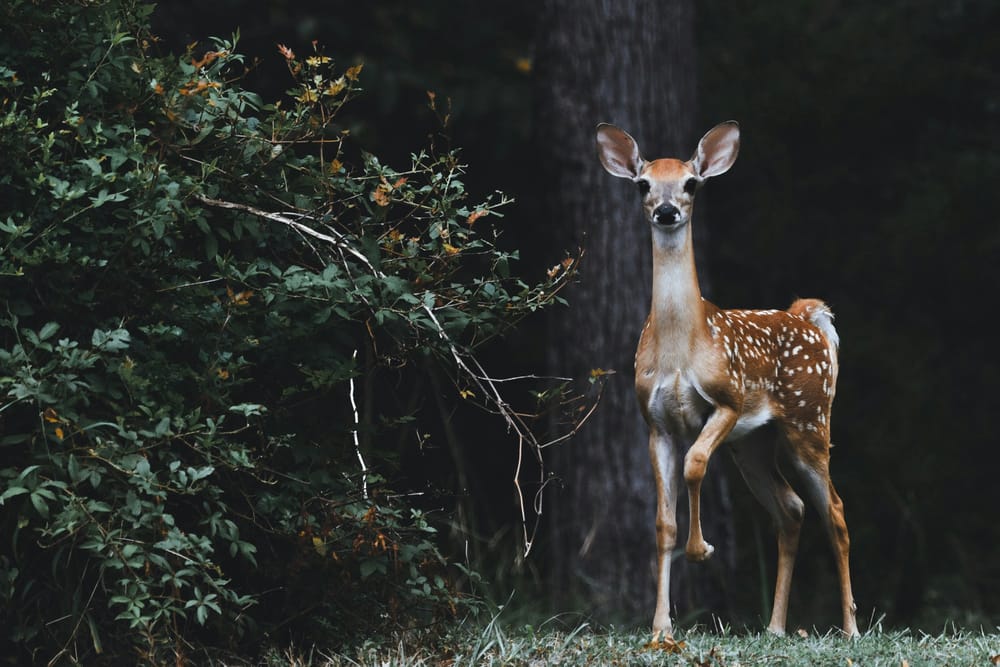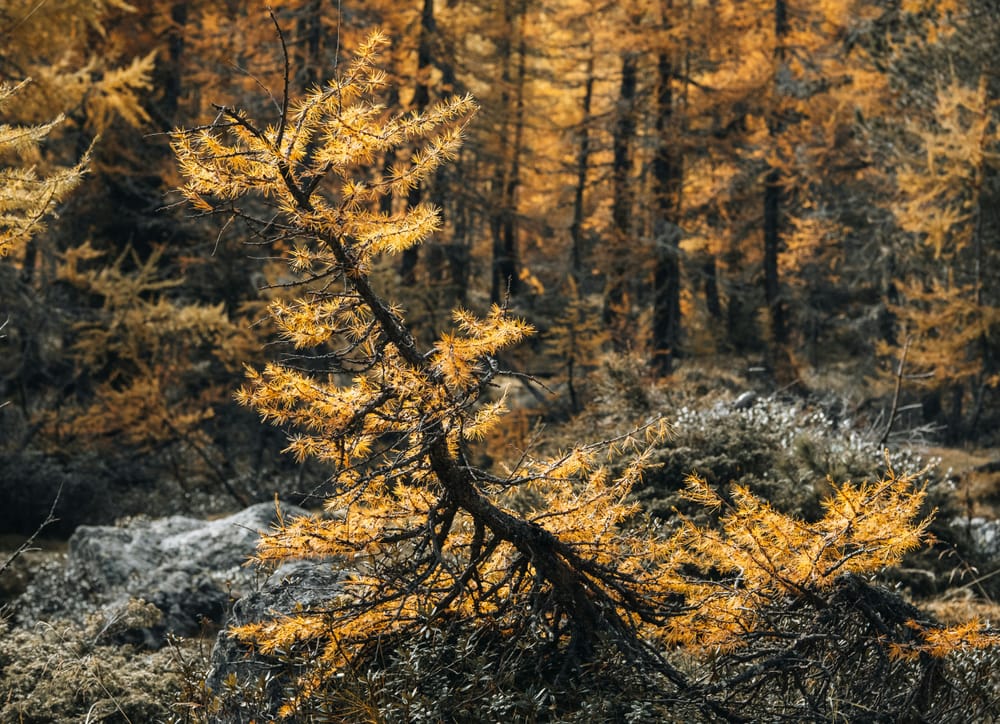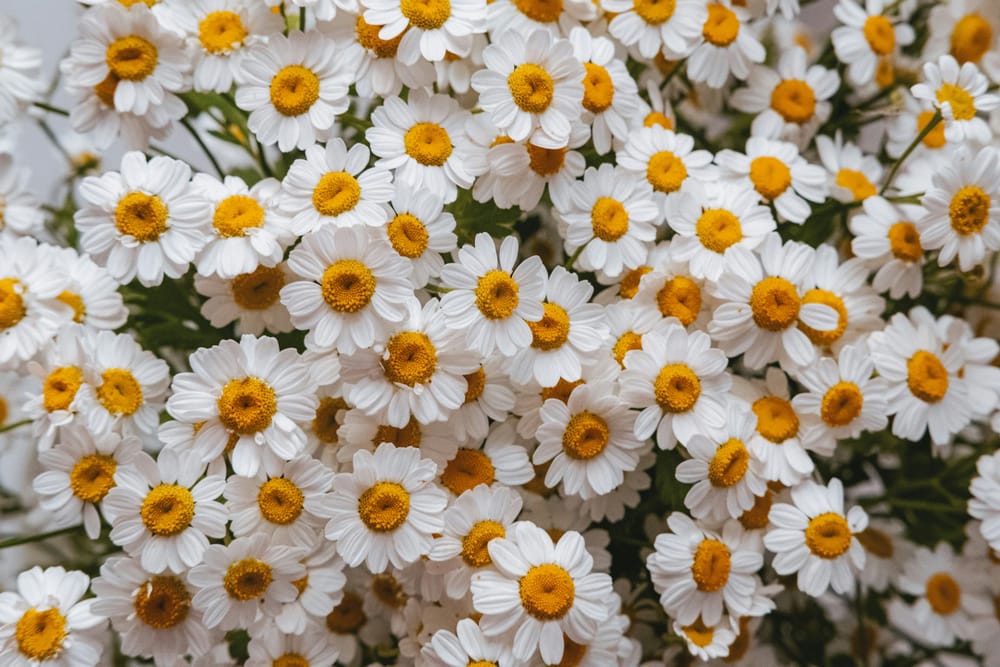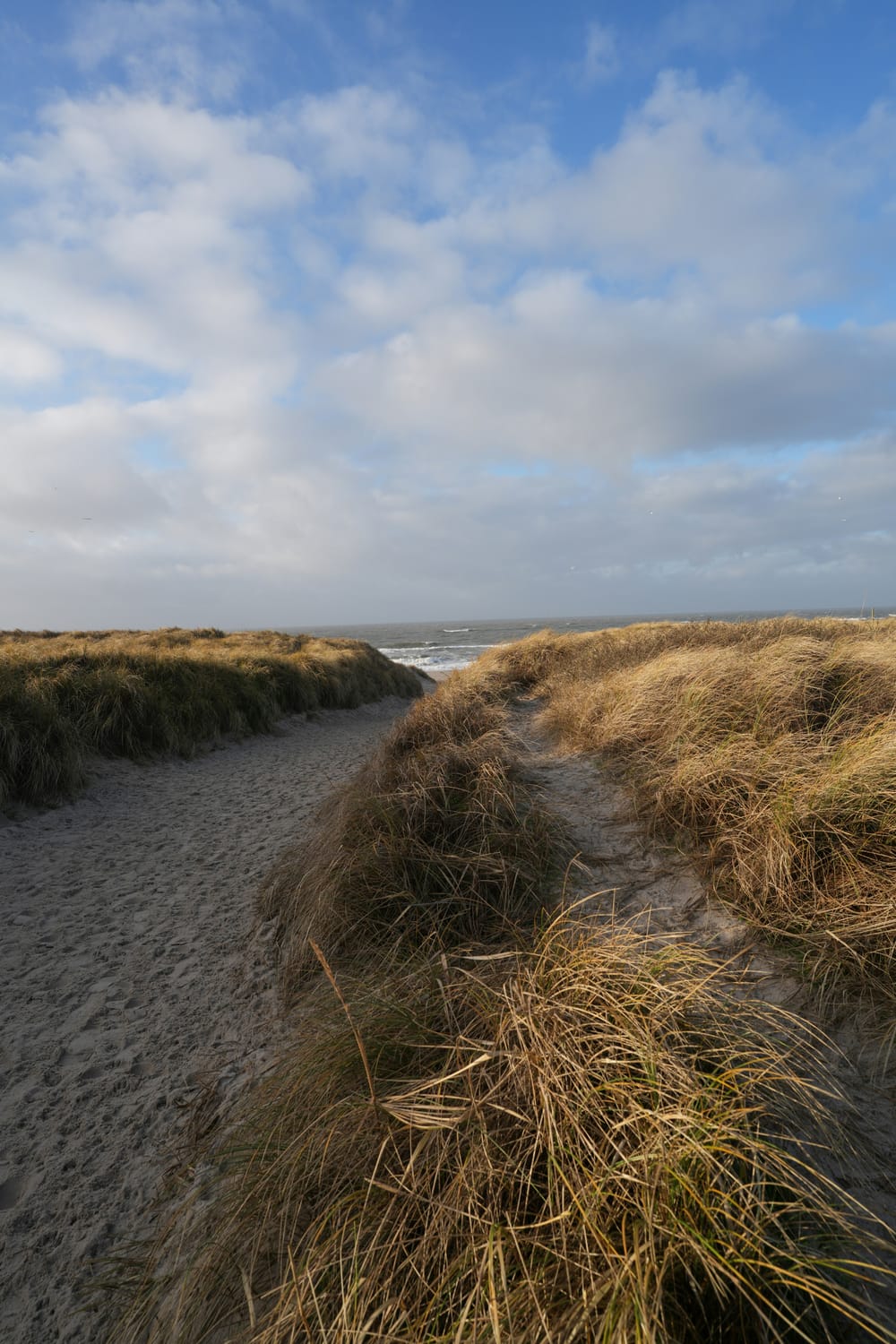For my half of this season of Kinship Meditations, I'm focusing on the animals I've met in my own backyard. Because while the exotic can be compelling, sometimes, you just have to get to know your neighbours. xoAmy
Just the other day I stepped outside, plopped myself down on a cold wooden step and, as I do, cast my lazy, sweeping gaze across the forest to watch the snow begin to melt its way down the ridge and into the creek below.
Something strange caught my eye. The sun was settling into dusk, and a blue pallor covered the snowy ridge. Except for one small spot, where the sinking sun cast its rays through the clouds and the trees in such a way as to form just one glowing, buttery spot of warmth amid the cold. An organic spotlight that focused my attention on the theatre of the woods. And as a connoisseur of scintillation - the way light sparkles - I fixated my attention on the patch of soft, inviting, yellow light. I stared, and stared, and seconds later a deer emerged from its camouflage of Ash trees, inquisitive nose first, and placed itself inside this yellow spotlight to take centre stage, and start the show. And the back up dancers appeared, more whiletails, fawns to round out the cast.
Now this was not the first time I had seen deer in the woods behind my house, probably closer to one hundredth, but it was the first time that the sun and trees and clouds and deer had conspired to stage- direct performance art that only I could see.
And it was fucking magical.
But honestly it’s magical every time.
Every single time.
Much human mythology paints deer as a connector and translator between the human and the divine, and so it is here, in these woods.
When I’m washing dishes and glance up to spot that signature elegant gait, I stop, I marvel. I feel filled with a sense of wonder and awe that is singularly reserved for these pure creatures. They are my unicorns.
I am deer kin, and I prance in the woods.
I am deer kin, curious but shy, I approach this life with cautious optimism, and necessary vigilance. I have eyes on the side of my head. Equal parts jitter and grace.
We share a land, a yard, a creek, and we are kin. Neighbours in right relation.
Deer have existed for three million years.
This land is more theirs than mine.
At first we were so excited, I’d yell to my spouse “DEER DEER DEER” and startled by my shouts, they would inevitably run away. I’ve since learned better. I admire in quiet contemplation.
I spotted a deer in these woods one time, and we both froze and made eye contact for what felt like an eternity. I bowed my head in silent reverence and the deer understood. This time, she did not run away, but continued her peaceful graze.
But I may have misinterpreted the situation. What felt to me like a profound connection was more likely just a basic assessment.
So while I was thinking ‘our eyes are connecting our souls, deer friend, and we are kin. You can feel my reverence for you and this land…’ this deer was probably thinking “what’s that thing?” and deciding I was nothing, carried on eating.
But that’s okay. The deer will never see me the same way I see them. It’s important for me to remember to see my world through their eyes.
In “I Opened The Gate, Laughing” Mayumi Oda tells a story called The Deer’s Path in which she describes building a garden, a paradise of safety and comfort, and building fences all around it to keep the deer, and the world, out. One day she opened the garden gate and walked into the woods.
She wrote:
“I waded down the creek bed and came upon a quiet, deep pool. I took my clothes off and jumped in {...} Floating, I noticed at the muddy corner of the pool many deer footprints, small and large, sliding into the water. A family of deer must have come here to drink, I thought. The place felt sacred [...] I saw my pink house in the distance. I stood there and saw my garden through a deer’s eyes. The garden that I loved so much looked ridiculous to me. It had the self-conscious stiffness of a proper English garden. And now in the summer heat it looked dry and completely alien from the wild green of the alder grove surrounding it, as though it did not belong in this mysterious valley at all. I was dumbfounded [...] now I had taken the deer’s path and had seen the other side of my fence.[...] The whole world became my garden. I decided to take the fence down.” (pg 69-71)
What happens, Witches, when we take the fence down? When we look at ourselves from the vantage point of the deer’s path? It’s a useful perspective because, like Witches, deer exist on the edge.
“Deer may seem elusive, secretive, but there’s a reason. They live on the boundaries, the borderlands, making a home for themselves in the places between worlds - the spaces between the wilderness and the man-made. It’s the habitat known as the edge where farms meet the forest and backyards meet the backwoods.” (The Mystical Life of Deer and the Discovery of a White Deer)
Does that feel familiar? We witches also make a home for ourselves on the fringes between worlds - between the real and imagined, the material and the mystical, between the wilderness and the man-made, and like our deer kin, this makes up particularly adept at seeing the ridiculousness of self-conscious stiffness, at seeing the world as our garden.
And our whitetailed kin live on another edge, that between day and night. Deer are crepuscular creatures, which means they are most active at dusk and dawn, those liminal spaces of time when their eyes, with fewer cones but more rods than human eyes, see best, and shadows camouflage their movements.
Perhaps this can also be true for Witches. That we are somehow protected by our powers of observation, and our ability to see the world differently. To observe from the fringes of day and night, from the edges of human existence. And this is a gift that my deer neighbours have given to me. To spot them is a reminder to enter a state of slow motion, to stop and observe the grace and wonder of magic that lives hidden amid the trees.
Bucks and does, that’s male and female deer, tend to live separately. The bucks seek out locations high in food availability, while the does look for places with good ground cover, safe places to hide and rear their fawns, and we humans can see this in ourselves. The masculine bravado, versus a feminized fear. Some of us have spent our whole lives feeling hunted, and doing everything in our power to stay safe. We become shy or skittish.
Sometimes bucks fight one another for mating supremacy and in doing so, their antlers become hopelessly entangled together until both bucks die from starvation and exhaustion. This is a warning from our deer kin to the war-mongers among us humans - that to become entangled in fights for power can often lead to mutually assured destruction, antlers locked together in battle until there is no victory. Only loss. Only death.
In First Nations mythology, tribes including the Potawatomi, Creek, Omaha, and Ponca tell stories of the Deer Woman, or Deer Lady who in some tales takes vengeance on men who are violent toward women and children. Though our whitetail kin are native to North America, the deer family comprises 43 species around the world, and everywhere that we find deer, we find deer myths.
But before we impose a human-style gender binary onto our deer kin, the deer themselves remind us that the fringes of biological sex traits are also a part of nature. In general, male whitetail deer have antlers while females don't, BUT According to the Missouri Department of Conservation, “As many as one in every 65 or as few as one in 4,437 female white-tailed deer may grow antlers, depending on the region within North America. It's all a question of hormones.” Our trans or non-binary Witch siblings can look to deer as kin, as evidence that there is a lot of life in the colour gradient space between two ends of a spectrum.
In her poem ‘The Faces of Deer’, Mary Oliver reminds us that
“Each hoof of each
animal makes the sign of a heart as it touches
then lifts away from the ground.”
And we witches can be deer hooves ourselves, leaving heart-shaped prints on the earth as we move through the world. Like many witches and poets who spend time in the deep woods, Mary wrote a lot of poems from the viewpoint of the deer’s path, wishing, as I have so many times, that she could befriend them, that they would see her as kin, and not as threat. I’ve wished this of people too. Anyone who wept when Disney’s Bambi lost his mother knows this guilty grief that seats itself in the harm that humans do. Our deer kin are right to fear us.
In “This Morning I Watched the Deer” Mary wrote:
“This is the wish that the deer would not lift their heads and leap away, leaving me there alone. This is the wish to touch their faces, their brown wrists - to sing some sparking poem intothe folds of their ears.
then walk with them,
over the hills
and over the hills
and into the impossible trees.”
Sometimes though, like our deer kin, we can’t run away. Like deer in the headlights, the dangers of life overwhelm and paralyze us and we freeze. At other times, we laugh at obstacles and hurtle ourselves over them in pursuit of what we want and need - whitetails can jump an eight foot fence if what’s on the other side is compelling enough. Because while our deer kin are shy, they are also extremely curious, and like us Witches, sometimes the need to know, the need to experience, trumps the compulsion to hide in fear.
What happens, Witches, when we take the fence down? When we look at our world from the vantage point of the deer’s path? What happens when we take down the fence that we’ve built between the human and non-human worlds and recognize ourselves as kin?
In Psalms 18:33 the bible suggests that belief “makes my feet like the feet of a deer; enables me to stand on the heights.”
Our craft is not just a faith, but also a practice. We walk the edges of stories and sample from wild hedges with the curiosity of a whitetail - bibles even if we want to. Our love for the natural world, for the gentleness of deer, and the view from the deer’s path can be a meeting place for practitioners of different faiths where the common goal is peaceful, curious kinship.
Through kinship, we can stand on the heights, walk together on the edges, leaving heart-shaped footprints as we go, jump fences and see the whole world as our garden. Equal parts jitter and grace. Sometimes brave and sometimes scared, situated between the earthly and the divine.
And it is fucking magical.
We are Witches. We are deer kin, and we make our homes in a place called The Edge.
Amy (she/they) is the co-founder of Missing Witches and co-author of Missing Witches: Reclaiming True Histories of Feminist Magic and New Moon Magic: 13 Anti-Capitalist Tools for Resistance and Re-Enchantment.
Amy supports the Native Women's Shelter of Montreal and Black Witch University.
Woodland deer sound: Transformed natural soundscape: Nature-Symphony 14 by Philip_Goddard – https://freesound.org/s/707360/



